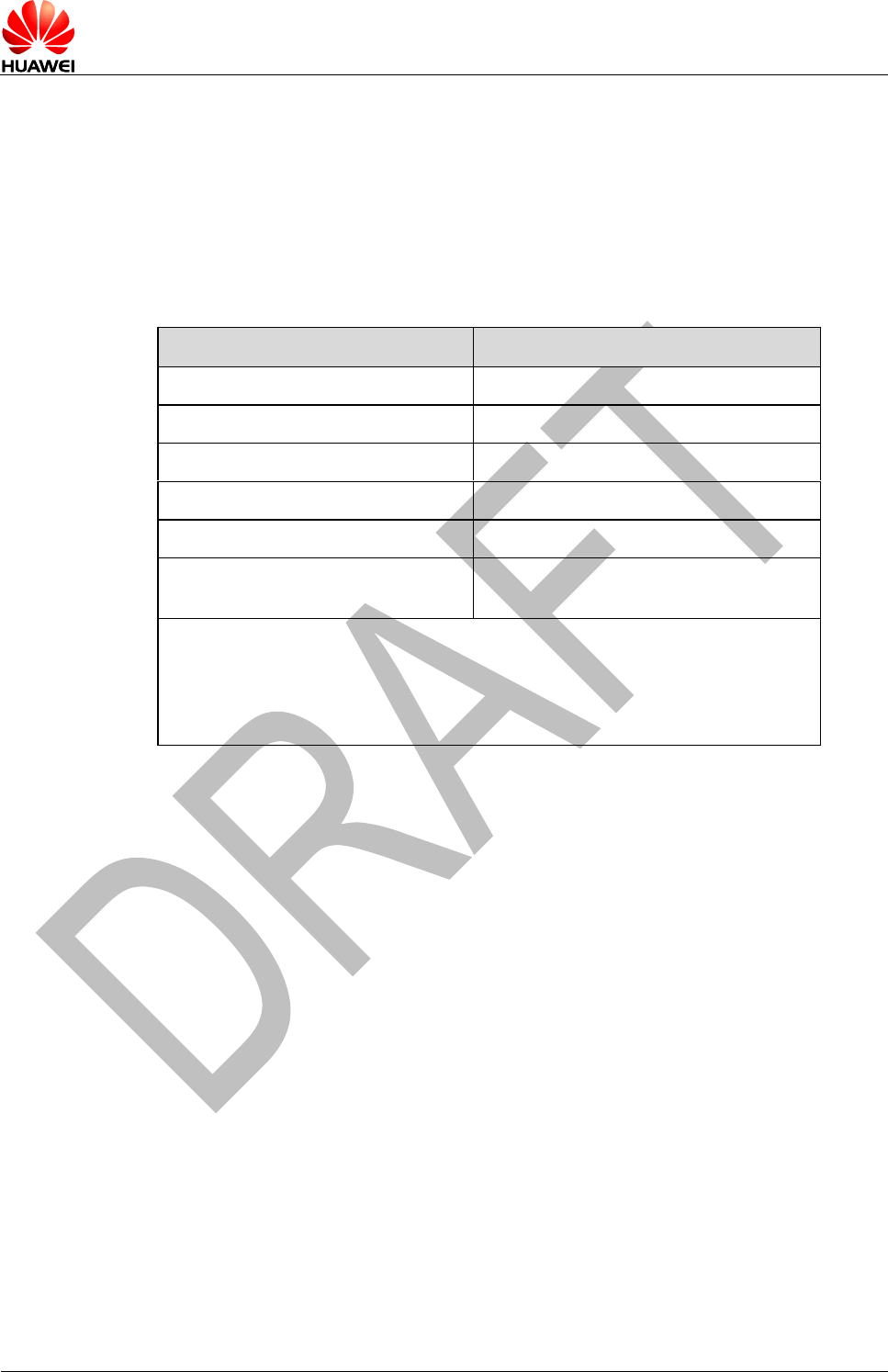
HUAWEI MC509 CDMA LGA Module
Hardware Guide
Certifications
Issue 01 (2011-04-08)
Huawei Proprietary and Confidential
Copyright © Huawei Technologies Co., Ltd.
60
7.2 Environmental Protection Certification and Test
7.2.1 RoHS
RoSH stands for the restriction of the use of certain hazardous substances in
electrical and electronic equipment.
The following table lists the substances restricted by the RoHS and upper thresholds
of their density.
Restricted Substance
Density Threshold (ppm)
Cadmium (Cd)
100
Lead (Pb)
1000
Mercury (Hg)
1000
Hexavalent chromium (Cr6+)
1000
Polybrominated biphenyls (PBB)
1000
Polybrominated diphenyl ether
(PBDE)
1000
The RoHS does not conflict with the following regulations:
Battery directive
Cadmium directive (91/338/EEC)
Directive 2004/12/EC on packaging and packaging waste
Declaration of Conformity (DOC): The product is declared as environment-friendly or
as compliant with the environmental protection requirements after internal testing.
Notified body (NB) certification: The product passes the test arranged by a notified
body (SGS), and the notified body issues the relevant certificate.
SGS RoHS Test
Tested object: homogeneous material (a material that cannot be mechanically
disjoined into different materials) such as metal, plastic, glass, ceramics, solder, and
coating
Test method: IEC62321 or equivalent test methods
The following describes the test methods in detail:
XRF scanning
The XRF scanning measurement can only analyze the calibration substances
within its applicability scope. For chromium (Cr) and bromine (Br), the XRF
scanning result shows only the total chromium and total bromine but not
hexavalent chromium, PBB, or PBDE. If chromium or bromine is detected, you
need to further test hexavalent chromium, PBB, and PBDE by using other test
methods.
The following table lists the required test results.


















